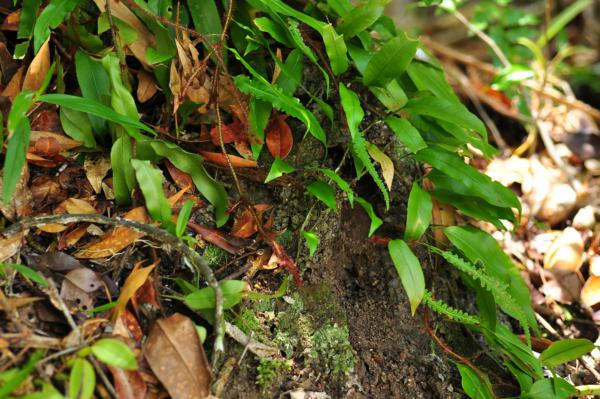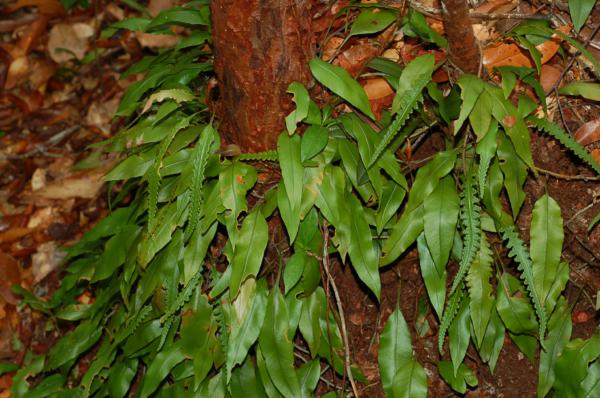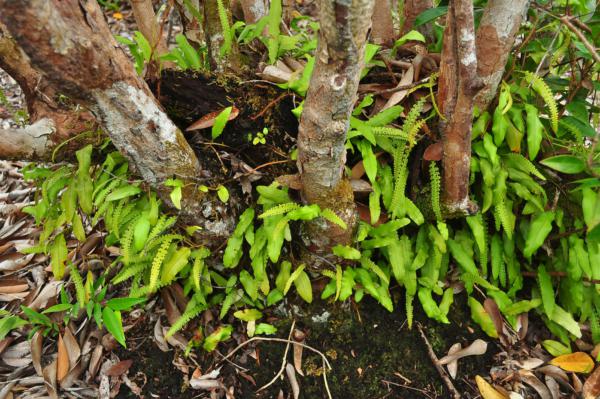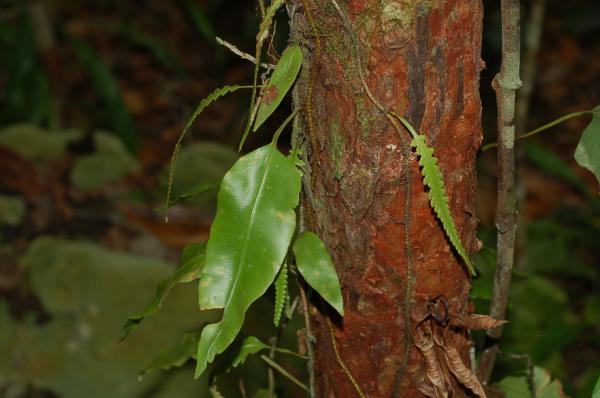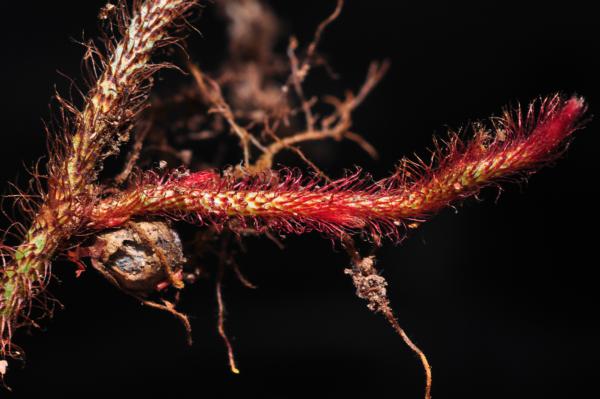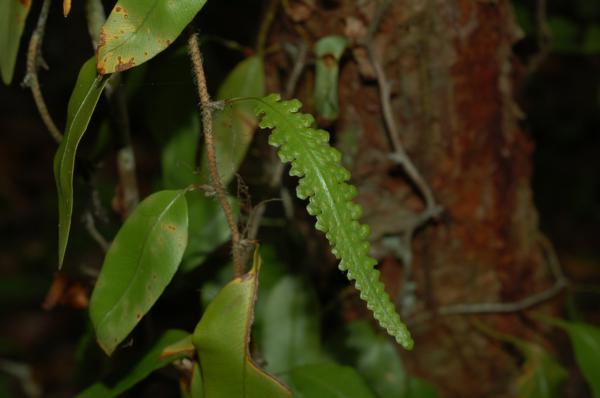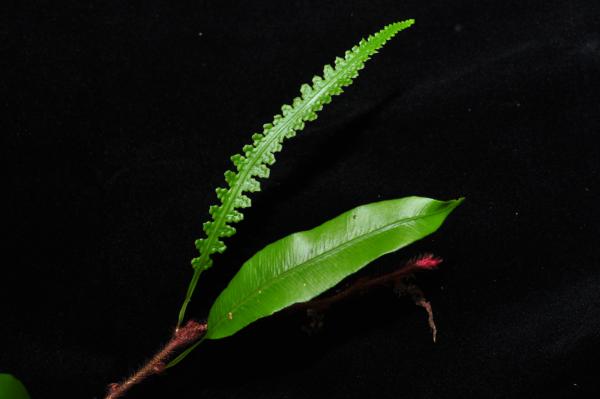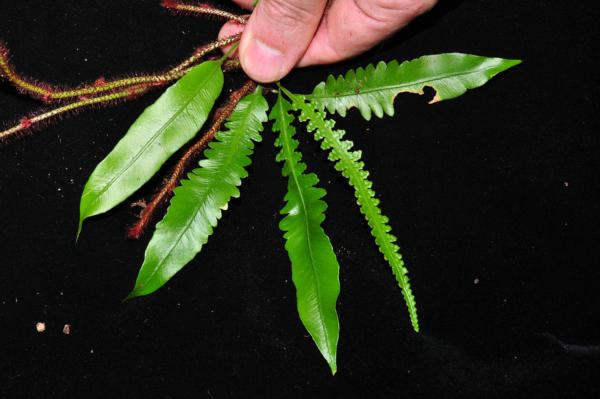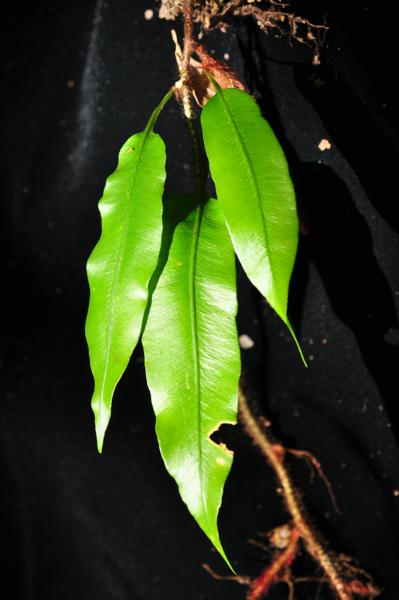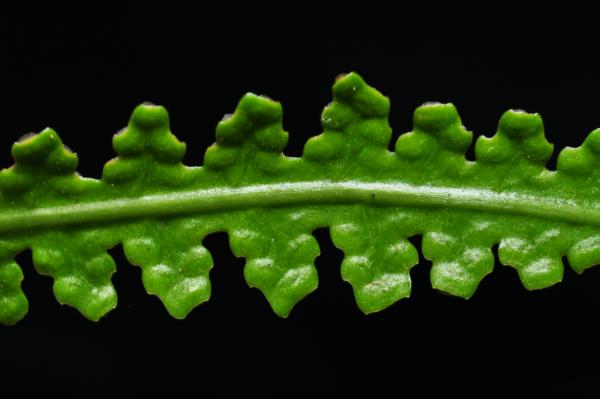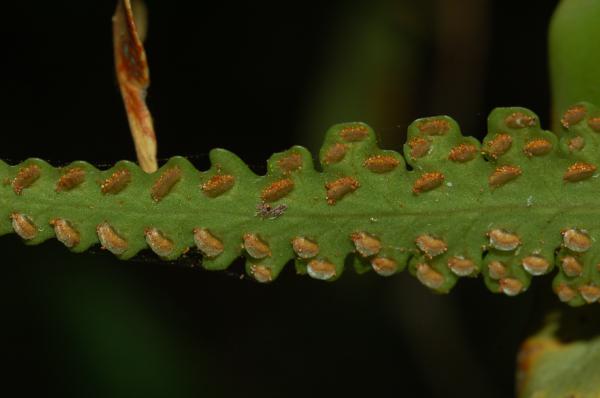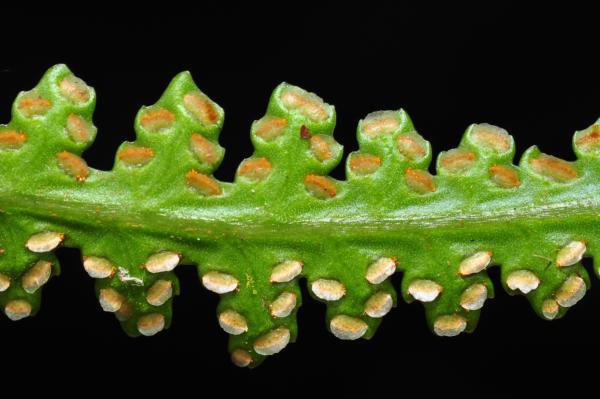
Davallia heterophylla Sm.
Family
Davalliaceae
Nomenclature
Davallia heterophylla Sm., Mém. Acad. Roy. Sci. (Turin) 5: 415. 1793; Tagawa & K.Iwats., Fl. Thailand 3: 616. 1989; Nooteboom, Fl. Males., Ser. II, Ferns and Fern Allies 3: 254. 1998. – Humata heterophylla (Sm.) Desv., Mém. Soc. Linn. Paris 6(3): 323. 1827; Bedd, Handb. Ferns Brit. India: 46. 1883; Bonap., Notes Ptérid. 14: 53. 1923; E.Smith, J. Siam Soc. Nat. Hist. Suppl. 8: 2. 1929; Tardieu & C.Chr., Fl. Indo-Chine 7(2): 109. 1939; Holttum, Rev. Fl. Malaya ed. 1, 2: 366, f. 211. 1955 [‘1954’]; Tagawa & K.Iwats., Fl. Thailand 3: 168. 1985; Boonkerd & Pollawatn, Pterid. Thailand: 171, 235. 2000. – Type: Charles Miller 1778 (BM).
Description
Rhizome long creeping, about 1.5 mm diam., bearing dimorphic fronds remotely, glaucous, densely scaly; scales gradually narrowing from oblong base towards long tails, up to 6 by 0.7 mm, tails usually patent, brown to darker, minutely toothed. Sterile frond: stipe 0.5–2.5 cm long, narrowly winged; lamina simple, oblong, acuminate at apex, round to cuneate at base, entire, 6–9 by 2–2.5 cm; coriaceous, naked; veins twice or thrice forked, all free. Fertile frond: stipe 1–2.5 cm long, winged; lamina linear-lanceolate, gradually narrowing towards both ends, up to 9 by 1 cm, lobed to half way; lobes patent, round, wavy. Sori terminal on veinlets, 3–5 for each lobe, a little inside the edges; indusia up to 1 mm long, 2 mm broad, brown, entire .
Distribution in Thailand
PENINSULAR: Surat Thani, Phangnga, Krabi, Nakhon Si Thammarat, Songkhla, Narathiwat.
Wider Distribution
Throughout Malesia to the Pacific, north to S Vietnam (“Cochinchina”).
Ecology
On branches of trees in dense forests.
Proposed IUCN Conservation Assessment
Least Concern (LC). This species is widespread and not under any known threat.
Voucher specimens - Thailand
Middleton et al. 5224, Songkhla, Ton Nga Chang Wildlife Sanctuary (E).
Habit
Habit
Habit
Habit
Rhizome
Sterile and fertile fronds
Fertile and sterile fronds
Variation from sterile (margin entire) to fertile fronds (margin lobed) and intermediate stages
Sterile fronds
Upper surface of fertile frond
Lower surface of fertile frond
Sori
Site hosted by the Royal Botanic Garden Edinburgh. Content managed by Stuart Lindsay, Gardens by the Bay, Singapore and David Middleton, Singapore Botanic Gardens. Last updated 24 January 2012
